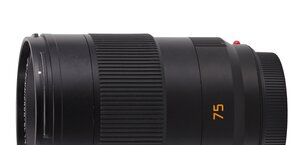Sigma 70-300 mm f/4-5.6 DG OS
8. Vignetting

As you can notice it is not bothersome. What’s more, it is very easily described with numbers because at the maximum aperture, regardless of focal length used, amounts to 24-26% (from −0.78 to −0.86 EV). Apart from that on stopping down by 1 EV we can eliminate this problem practically completely because the brightness loss in the frame corners decreases to about 10% there.
Please Support UsIf you enjoy our reviews and articles, and you want us to continue our work please, support our website by donating through PayPal. The funds are going to be used for paying our editorial team, renting servers, and equipping our testing studio; only that way we will be able to continue providing you interesting content for free. |
- - - - - - - - - - - - - - - - - - - - - - - - - - - - - - - - - - - - - - - - - - - - - - - -
It’s worth reminding that the Canon 70-300 mm IS on full frame had 45-46% of vignetting so the Sigma compares very favourably with it.
As we saw such good results on full frame it is not difficult to guess what will happen on the smaller sensor. Just to fulfill our annalistic duty we decided to post pictures and detailed results here.

At 70 mm and maximum aperture the vignetting level reaches just 13% (−0.41 EV) and on stopping down to f/5.6 it decreases to 5%. At 135 mm the performance is even better – at the maximum aperture you can hardly notice any vignetting because it amounts to only 10% there (−0.32 EV). The same situation we have at 200 mm. The biggest chances of seeing any light fall-off we get at 300 mm because it is 16% (−0.50 EV) there. On stopping down it decreases very fast, though, by f/8.0 reaching just 2%.
 |
 |
 |
 |






